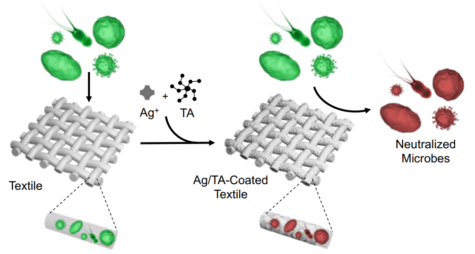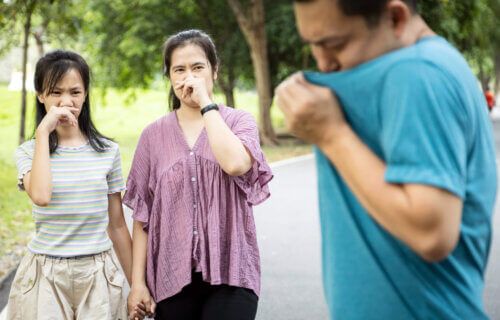TOKYO, Japan — Scientists have created an anti-microbial lining that can wipe out body odor thanks to some sweet-smelling chemicals in wine and chocolate. Researchers at the University of Tokyo say the invention opens the door to making clothes that don’t have to go in the washing machine all the time.
The material zaps underarm sweat, which gives garments a nasty odor. The new coating is a cocktail of silver and plant compounds (polyphenols) called tannins. They are found in many common foods and drinks including tea, coffee, wine, and chocolate.
“As kids often do, my son stained his shirt with chocolate one day, and I couldn’t scrub it out,” says project leader Dr. Joseph Richardson in a university release. “Professor Hirotaka Ejima and I have studied polyphenols for over a decade, but this chocolate incident got me thinking about using tannic acid to bind silver to fabrics.”
“We think we’ve found two methods to apply our antimicrobial silver coating to textiles, suitable for different use cases,” Richardson adds.

(CREDIT: © 2022 Ejima et al.)
The metal is a safe anti-microbial which can also treat wounds. It does not interact with human skin. The team says consumers could wash an item with this anti-microbial coating multiple times without it losing its ability to destroy odors.
Chemicals that cause “B.O.” build up in fibers over time and stubbornly resist flushing out, leading to a persistent stench. The coating, called AgTA, is both cost-effective and convenient, according to the Japanese team. This means people working from home could continue wearing the same shirt without stinking it up.
The coating lasts for over 10 washes
Dr. Richardson notes that it may be winter for half the world right now, but the weather will warm up eventually. That will bring back beach trips, sunny outdoor events, and (of course) sweat! Study authors say commercial clothing or fabric producers could simply bathe textiles in AgTA to create odor-fighting garments. Individuals may also end up spraying garments with the coating, adding it to their existing wardrobe.
“What’s most exciting is not the ease of application, but how effective the coating is,” Dr. Richardson explains. “We wanted to study the effect of the antimicrobial coating not just on odor-causing bacteria, but also on fungi and pathogens like viruses.”
“With so many variables to control, it was a challenge of time and complexity to test variations of compounds against variations of microorganisms,” the study author continues. “But through carefully optimizing our testing methods, we found that the coating neutralizes everything we tested it on. So Ag/TA could be useful in hospitals and other ideally sterile environments.”
The strength of AgTA, which is described in the journal Scientific Reports, was demonstrated in a series of tests. Cotton, polyester, and even silk maintained anti-microbial and odor-fighting properties for at least 10 washes.
“This isn’t just a hypothetical situation limited to the lab, I’ve tried it on my own shirts, socks, shoes, even my bathmat,” Dr. Richardson concludes. “We’d like to see what other useful compounds polyphenols might help bind to fabrics. Antimicrobial silver might just be the start.”
There are many kinds of products that people can wear or apply to their bodies which combat body odor. However, they are often expensive and offer limited choice and comfort.
South West News Service writer Mark Waghorn contributed to this report.
